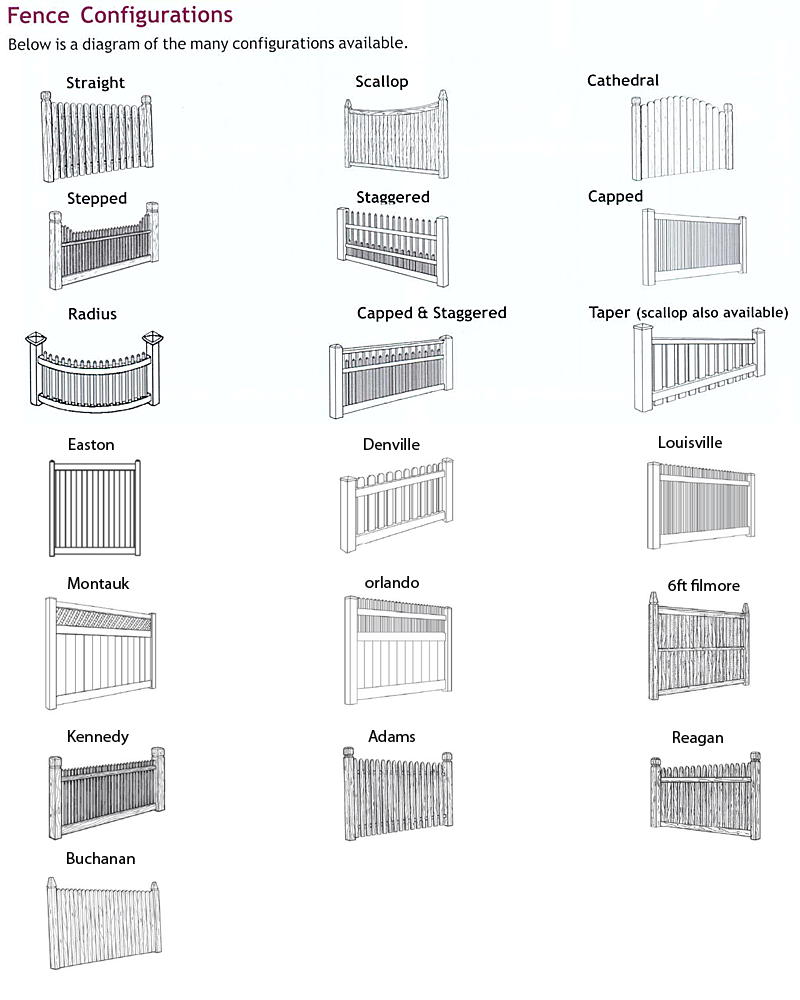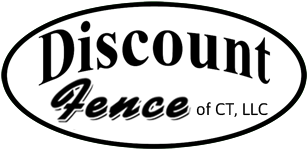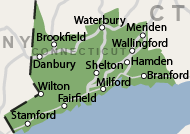Which fencing is best for you?
At Discount Fence of CT, LLC, we know that there isn’t one type of fencing that’s right for every homeowner. That’s why we offer so many options. Which one you choose depends upon your budget, style requirements, purpose, and personal taste. Here is a list of common fencing materials with pros and cons of each.
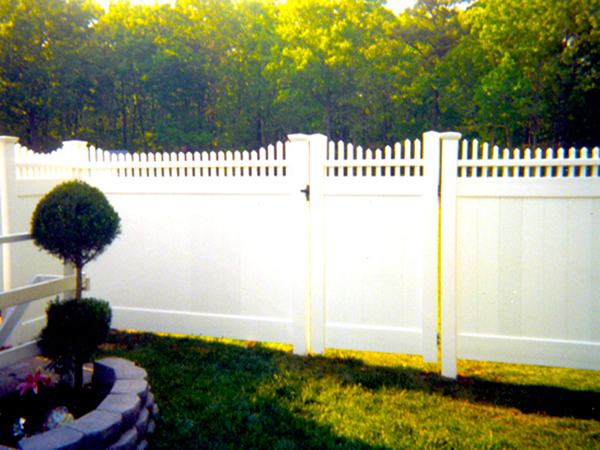
Vinyl
Vinyl fencing has a lot going for it, including low maintenance and always looking freshly painted. Its appearance, however, doesn’t appeal to everyone.
- Pro: Vinyl is manufactured in a wide variety of styles, including historical pickets, post and rail, solid privacy, and semi-privacy. There are many styles of decorative post caps to match. In addition, white is no longer is the only color choice. Nor is a gloss finish – matte finishes are now available.
- Pro: Vinyl won’t need to be repainted. It won’t warp, splinter, rot, split or blister. Dirt can be washed off with a sponge and hose or with a pressure washer.
- Pro: While initial labor and materials cost more than for a wood fence, vinyl fencing is less expensive over time if you factor in the cost of painting a wood fence every 4 or 5 years.
- Con: While vinyl is available in dozens of styles, there’s a limit to what you can design with it.
- Con: You don’t have to get too close to most types of vinyl fencing to see that it’s plastic. Don’t expect it to develop the charm and character that many wooden fences do as they age.
- Con: Vinyl pickets are hollow. A well-struck soccer ball will break off picket tops, especially in cold weather. Making repairs is not as easy as with a wood fence.
- Con: Vinyl is generally considered environmentally unfriendly. Toxins are produced in its manufacture, and it is difficult to recycle.
Composites
Composite fencing, aka engineered wood products, comes in a bewildering number of variations. Some offer solid boards while others are hollow. Some are “capped” or “co-extruded” with a layer of PVC while others are not. Some require multiple components for assembly while others are more like building with wood. What is common to all is they are made with recycled fibers, plastics, and binding agents.
- Pro: Appearance is more wood-like than vinyl fencing. Both textures (heavy embossing) and colors simulate wood.
- Pro: Like vinyl fencing, composite fences are prefinished. They don’t need staining or painting and require little maintenance. Dirt can be washed off with a mild detergent and a hose.
- Pro: Composite fencing is quite durable and will stand up to abuse.
- Pro: Composites are environmentally friendly, too. Up to 95 percent of materials used in manufacture are from recycled sources. They include materials as diverse as wood flour, rice hulls, and plastic containers.
- Pro: Assembly is with traditional fasteners, making repairs easy.
- Con: Composite fencing is available in fewer styles than vinyl and wood fencing, but can be used to build “board” type fences, including privacy, shadow box, simple dog-ear pickets, and post and rail.
- Con: Composites are susceptible to scratching, staining, and fading.
- Con: The cost of composite boards can run twice as much as pressure-treated wood.
Wood
Wood fences are a mainstay of the American landscape since Colonial days. They can be crafted in a wide variety of styles and painted or stained in an infinite number of colors.
- Pro: A wood fence style is only limited by your imagination. Cedar is the preferred material (redwood in some regions) because of their inherent resistance to rot and insects, but other woods can be used to make fencing as well. Pressure-treated wood is best for longevity, especially structural parts such as posts and rails.
- Pro: Most materials attempt to look like wood.
- Pro: The initial cost of a wood fence is significantly less than a vinyl or composite fence.
- Pro: Properly constructed and maintained, a wood fence is quite durable and will last for many years. In addition, it can withstand high winds better than other materials.
- Pro: Unlike petro-based materials wood, if sustainably harvested, is a renewable.
- Con: Wood fencing requires more maintenance than other types of fencing. It should be rinsed off a couple of times a year. It may need to be repainted or restained every 3 or 4 years as well.
- Con: Because of the additional maintenance required by wood, however, its cost may equal or exceed that of other fence types over its life.
Ornamental Metal
In many ways, ornamental metal fencing combines the best of all worlds. It comes in a wide variety of styles, from traditional to contemporary, is low-maintenance, and durable. While cast iron was the standard for many decades, today’s ornamental metal fencing is either powder-coated galvanized steel, aluminum, or a combination of aluminum and solid metal.
- Pro: Maintenance is limited to an occasional hosing. If rust or corrosion eventually appears, it can be brushed of and recoated with a rust inhibiting primer and paint.
- Pro: Durability is unsurpassed. You can buy Civil War era cast iron fencing that has outlasted the housed it once surrounded. Metal fencing can withstand most forces, including high winds and falling branches.
- Pro: Metal fencing can easily be recycled.
- Con: Metal fencing can be damaged by vandals or accidents. Repair often means having to replace the damaged section.
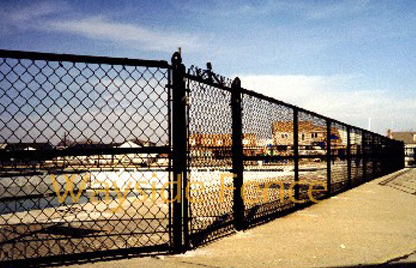
Steel Chain Link
Steel fencing takes many forms, the most popular of which is chain link. It is the first choice when security is a concern.
- Pro: Chain link fencing is not normally considered pretty, but there are plenty of situations where it can be used without becoming an eyesore. For example, the mesh makes a natural, indestructible, trellis.
- Pro: Chain link fencing is sturdy, maintenance free, durable, and economical. In addition, it’s ideal for situations where you want to see through a fence. A burglar cannot hide behind chain link.
- Pro: Repairs are relatively easy. Often, cut mesh fabric can be re-stitched. New railing may be needed if your fence is damaged by a falling tree limb or car.
- Pro: Chain link fencing is recyclable. Any scrap metal dealer will be happy to get it and may even pay you for your trouble. Try that with an old vinyl or composite fence!
- Con: Styles are limited; a chain link fence is always going to have a utilitarian look about it. Brown, green, and black polymer coatings, however, soften the look of silver chain link.
Looking for a price? Get a no cost, no obligation free estimate.
Related Pages:
Common Fence Configurations
